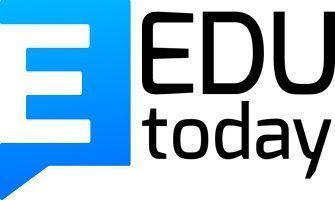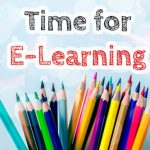You will be required to analyse trends in e-learning, monitor and evaluate one e-learning solution set up for one business need or the needs of a specified user group, document, review and evaluate the e-learning resources and policies, procedures to meet organisational and individual learner needs. make recommendations for improvements.
There are different types of e-learning solutions available in the market today. Some of these solutions are:
- Learning management systems (LMS): A learning management system (LMS) is a software application that helps organisations plan, deliver, and track employee training programmes. It allows organisations to centrally store all their training content and materials in one place, making it easy for employees to access and complete courses.
- E-learning platforms: An e-learning platform is a software application that provides the infrastructure and tools needed to create, deliver, and manage online learning programmes. E-learning platforms typically include features such as course creation and management tools, learner tracking and reporting tools, and integration with third-party applications.
- Collaborative learning platforms: A collaborative learning platform is a software application that facilitates collaboration between learners and instructors by providing tools for communication, content sharing, and task management. Collaborative learning platforms are often used in online courses to facilitate group work and discussion.
- Virtual classrooms: A virtual classroom is a simulated online environment that allows learners and instructors to interact with each other in real-time. Virtual classrooms typically provide features such as video conferencing, chat rooms, and whiteboards.
- Mobile learning: Mobile learning is a type of e-learning that is designed to be accessed on mobile devices such as smartphones and tablets. Mobile learning apps often include features such as offline access, push notifications, and gamification.
- Social learning: Social learning is a type of e-learning that relies on social media and other online collaboration tools to facilitate interaction and knowledge sharing between learners. Social learning platforms often include features such as discussion forums, blogs, and wikis.
- Gamified learning: Gamified learning is a type of e-learning that uses game mechanics and elements to engage learners and encourage them to achieve their learning objectives. Gamified learning platforms often include features such as badges, points, and leaderboards.
- Microlearning: Microlearning is a type of e-learning that delivers bite-sized pieces of content that can be easily consumed on mobile devices. Microlearning courses are typically shorter than traditional e-learning courses and are designed to be completed in short bursts.
- Project-based learning: Project-based learning is a type of e-learning that revolves around learners working on real-world projects. Project-based learning courses often include features such as group work, mentor support, and client feedback.
- Virtual reality: Virtual reality (VR) is a type of e-learning that uses computer-generated simulations to create immersive learning experiences. Virtual reality courses often include features such as 3D environments, avatar customisation, and interaction with other users.
When choosing an e-learning solution, it is important to consider the needs of your organisation and your learners. Some factors to consider include:
- The type of content you want to deliver: E-learning solutions can be used to deliver a variety of content types, including text, audio, video, and interactive simulations. Consider the type of content that will best meet the needs of your organisation and your learners.
- The delivery format: E-learning solutions can be delivered in a variety of formats, including online courses, mobile apps, and virtual reality simulations. Consider the delivery format that will best meet the needs of your organisation and your learners.
- The learning objectives: E-learning solutions can be used to achieve a variety of learning objectives, including knowledge acquisition, skills development, and behaviour change. Consider the learning objectives that you want to achieve with your e-learning solution.
- The target audience: E-learning solutions can be targeted at a variety of audiences, including employees, customers, partners, and students. Consider the target audience for your e-learning solution.
- The budget: E-learning solutions can vary widely in price, depending on the features and functionality they offer. Consider the budget you have available for your e-learning solution.
- The timeframe: E-learning solutions can be implemented in a variety of timeframes, depending on the complexity of the content and the number of learners involved. Consider the timeframe you have available for your e-learning solution.
Once you have considered the needs of your organisation and your learners, you can start to narrow down your options and choose an e-learning solution that best meets your needs. When evaluating e-learning solutions, it is important to consider the following factors:
- Ease of use: The e-learning solution should be easy for learners to use and navigate. The user interface should be intuitive and user-friendly.
- Content quality: The e-learning solution should offer high-quality content that is relevant and engaging. The content should be well-designed and appropriate for the target audience.
- Course structure: The e-learning solution should offer a well-structured course that is easy to follow. The course should be logically organised and clearly presented.
- Assessment and feedback: The e-learning solution should offer assessment tools and feedback mechanisms to help learners track their progress and identify areas for improvement.
- Support and resources: The e-learning solution should offer support and resources to help learners complete the course successfully. The support should be readily available and easy to access.
- Pricing: The e-learning solution should be competitively priced. The price should be fair and reasonable in relation to the features and benefits offered.
Once you have selected an e-learning solution, you will need to implement it in your organisation. When implementing an e-learning solution, it is important to consider the following factors:
- Technology: The e-learning solution should be compatible with the technology infrastructure in your organisation. The solution should be easy to deploy and manage.
- Change management: The e-learning solution will require changes to the way employees work. It is important to manage these changes effectively to ensure a successful implementation.
- Training: Employees will need training on how to use the e-learning solution. The training should be well-designed and delivered by qualified trainers.
- Evaluation: The e-learning solution should be evaluated regularly to ensure it is meeting the needs of your organisation and your learners. Regular feedback should be sought from employees and learners.
- Reporting: The e-learning solution should offer reporting tools to help you track the progress of employees and identify areas for improvement.
E-learning solutions can be a valuable addition to any organisation. When selecting an e-learning solution, it is important to consider the needs of your organisation and your learners. When implementing an e-learning solution, it is important to consider the technology infrastructure in your organisation and the changes that will need to be made to employee work patterns. Regular evaluation is essential to ensure the e-learning solution is meeting the needs of your organisation and your learners.











